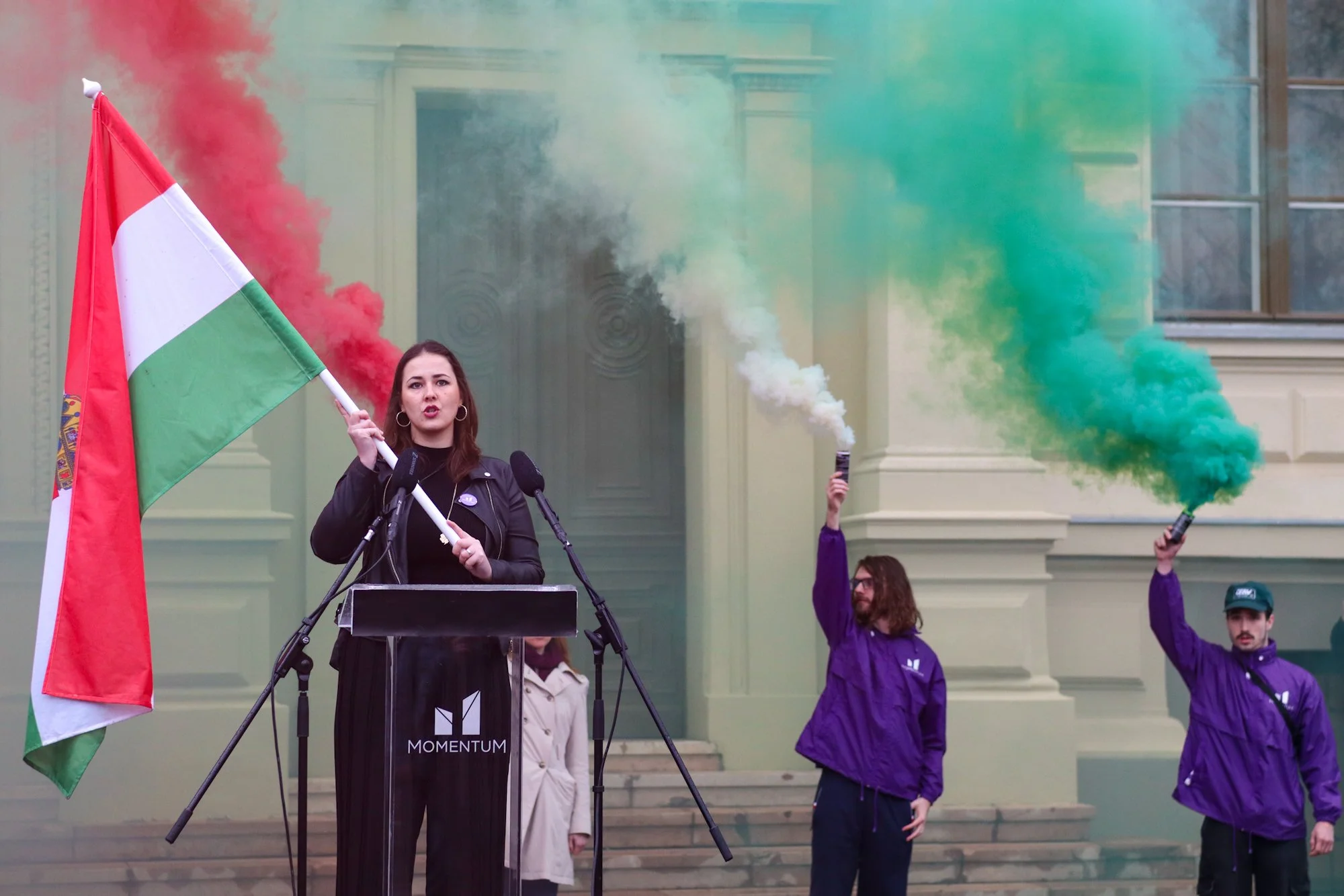Szeged demonstration ends with bridge occupation over crackdown on protest rights
Hundreds gathered in downtown Szeged on Saturday to oppose government efforts to restrict the right to protest. Held in Dugonics Square under the slogan “Protesting is a Fundamental Right,” the demonstration featured prominent opposition voices and ended with a symbolic occupation of the city’s central bridge.
Szeged, Hungary – March 29, 2025
Speakers included Áron Varsányi, spokesperson for the Momentum Movement; Noémi Halász, head of Momentum’s Szeged chapter; psychologist Marina Tódor; independent MP Ákos Hadházy; and Momentum vice president Lajos Lőcsei.
The protest was organized in response to recent legislative changes that critics say would allow the Hungarian government to ban public gatherings it deems politically inconvenient. One of the most controversial new laws prohibits events like Pride marches near schools and other public institutions, citing child protection – a move widely condemned as a discriminatory attack on LGBTQ communities. Halász referenced a recent speech by Prime Minister Viktor Orbán, where he likened political opponents to stink bugs – green insects commonly seen as unpleasant pests. She condemned the comparison as dehumanizing and called on the public to reject such divisive rhetoric.
“We must tell the government: enough is enough!” she declared.
Psychologist Marina Tódor challenged the claim that LGBTQ visibility harms children. “There’s no scientific evidence to support that,” she said, adding that children are more affected by growing up with alcoholic parents or being placed in underfunded state care. “These new laws serve only propaganda purposes. What the government says about them is simply not true.”
MP Ákos Hadházy warned that the new law banning Pride events is fascist in nature. “It discriminates against people,” he said. “And it’s techno-fascist because it allows authorities to use facial recognition to identify and punish protesters.” He noted that such surveillance violates EU rules, which only permit facial recognition in serious criminal or terrorist cases.
Lajos Lőcsei added that while opposition voices might be silenced in Parliament, “they can’t be silenced in the streets.” He called for unity among citizens to bring about political change.
After the speeches, the crowd sang the Hungarian national anthem as red, white, and green smoke flares – representing the national flag – were set off. The demonstrators then marched to the local Fidesz party office, where they stuck handwritten notes with messages for the government onto the windows. Each message was read aloud through a loudspeaker so the entire crowd could hear.
Although the official protest was declared over, some attendees began chanting, “To the bridge!” and moved together toward the nearby Belvárosi Tisza Bridge. Around 100 to 150 people blocked the bridge, stopping traffic. Police formed a line and ordered them to disperse, but the mostly young crowd refused, responding with chants.
With Szeged’s other bridge – the Bertalan Bridge – still open, the demonstration caused only minor traffic disruption. Still, cars, trolleys, and buses were blocked, and police closed the bridge at both ends.
After issuing three warnings, the police line stepped back and monitored the situation from a distance. About 25 minutes later, the protesters voluntarily left the bridge without any arrests or force being used.
The Szeged protest follows similar demonstrations in Budapest and reflects growing public concern over declining civil liberties and democratic rights in Hungary.
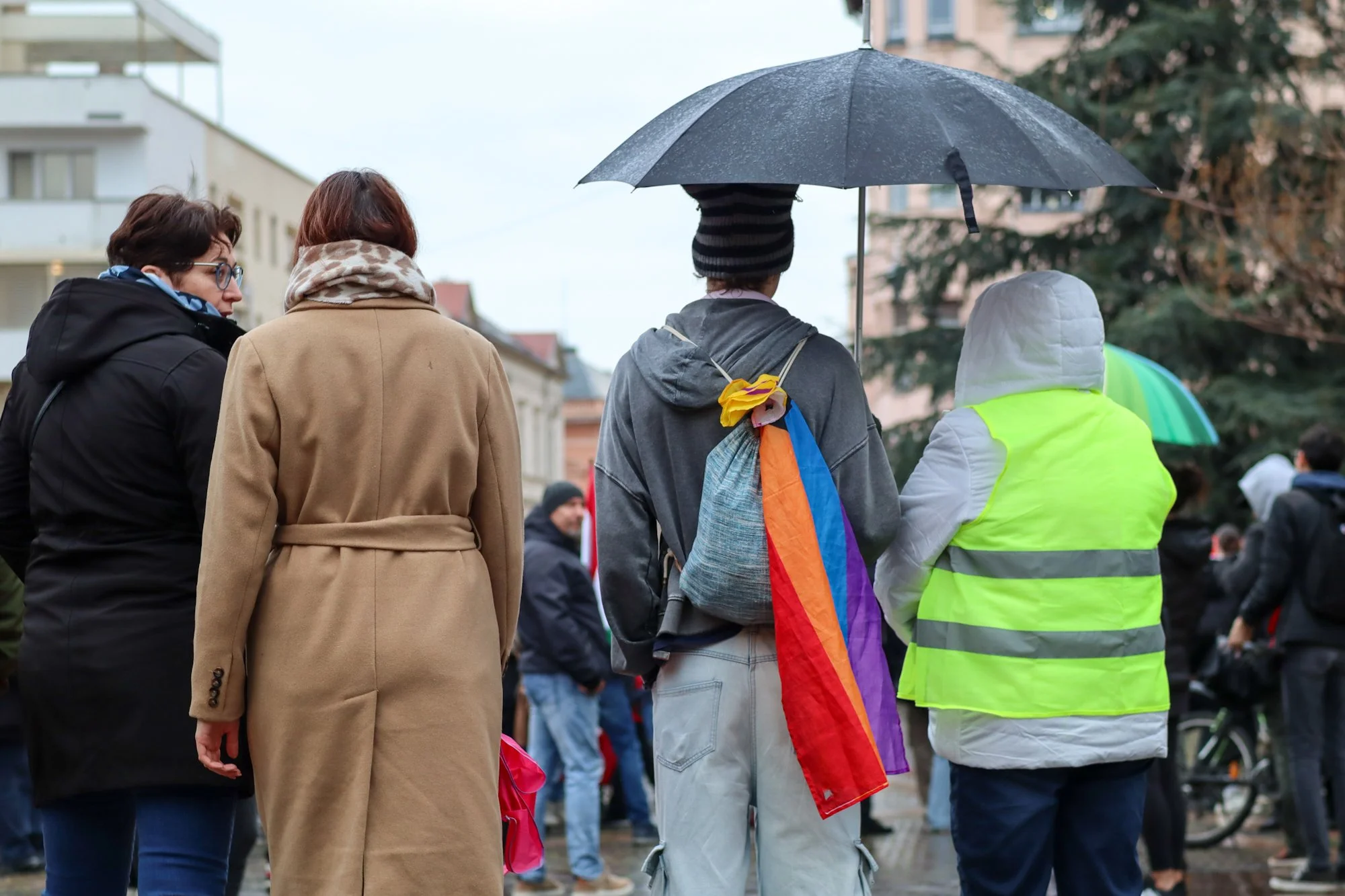
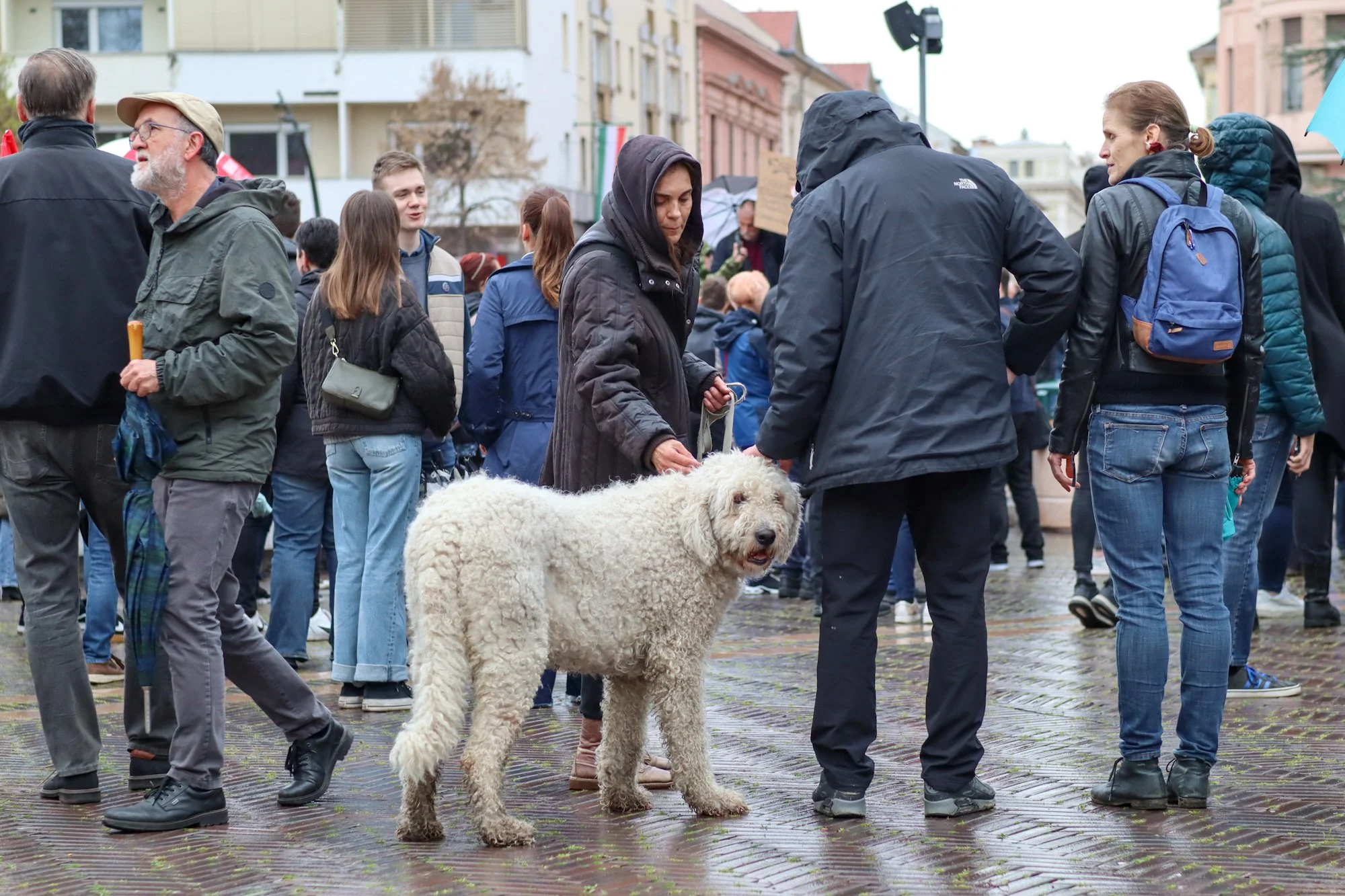
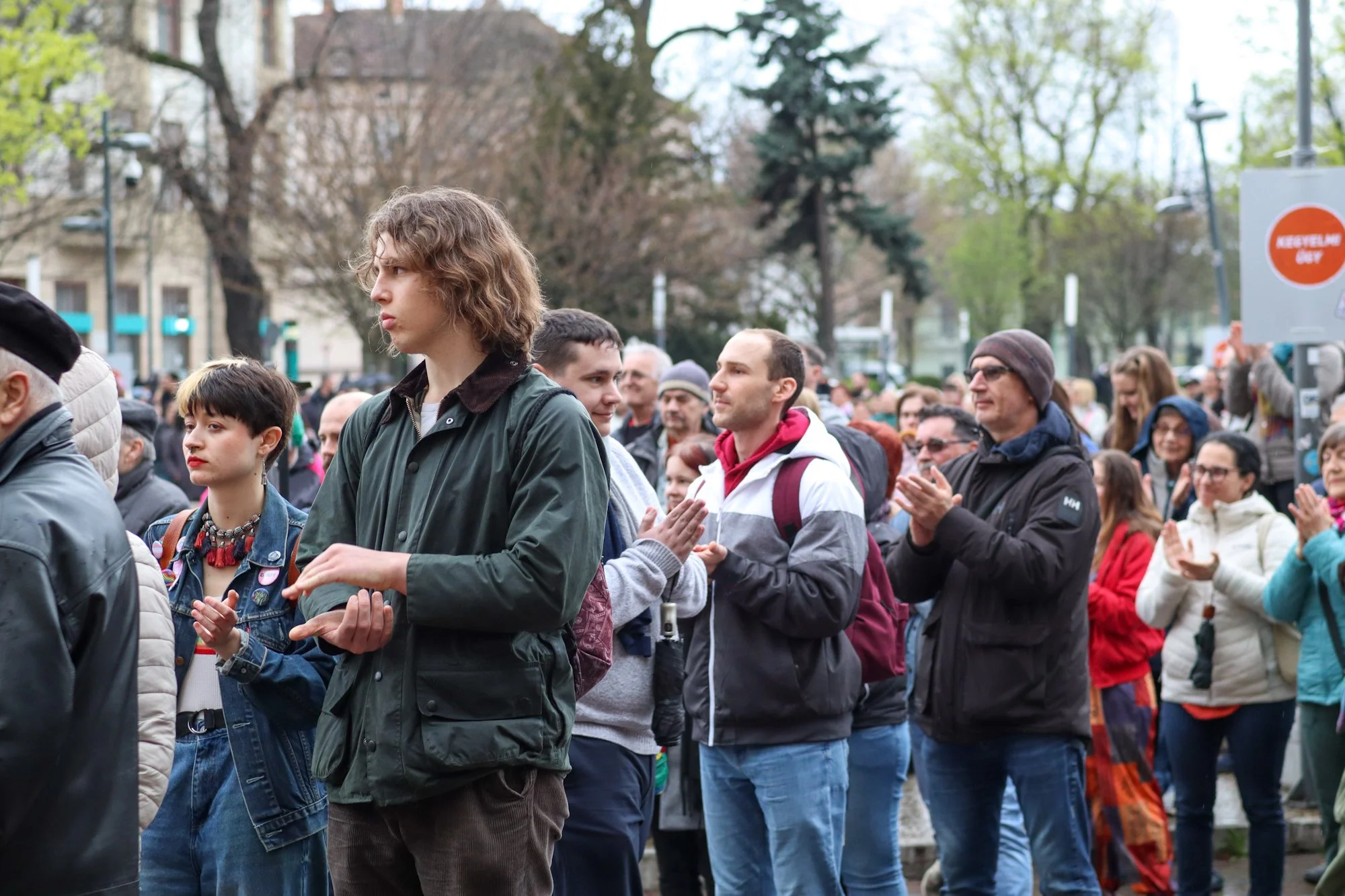
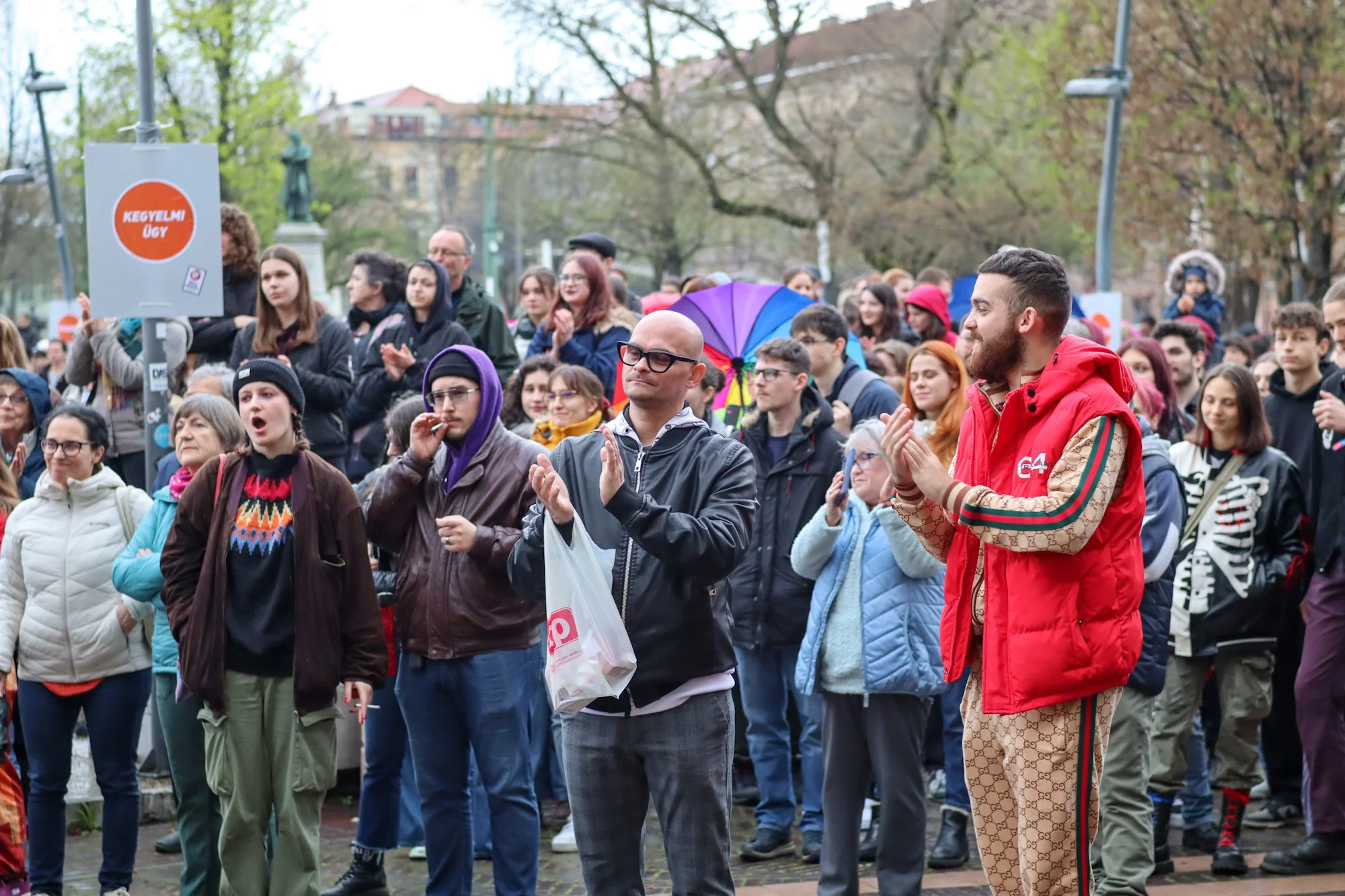
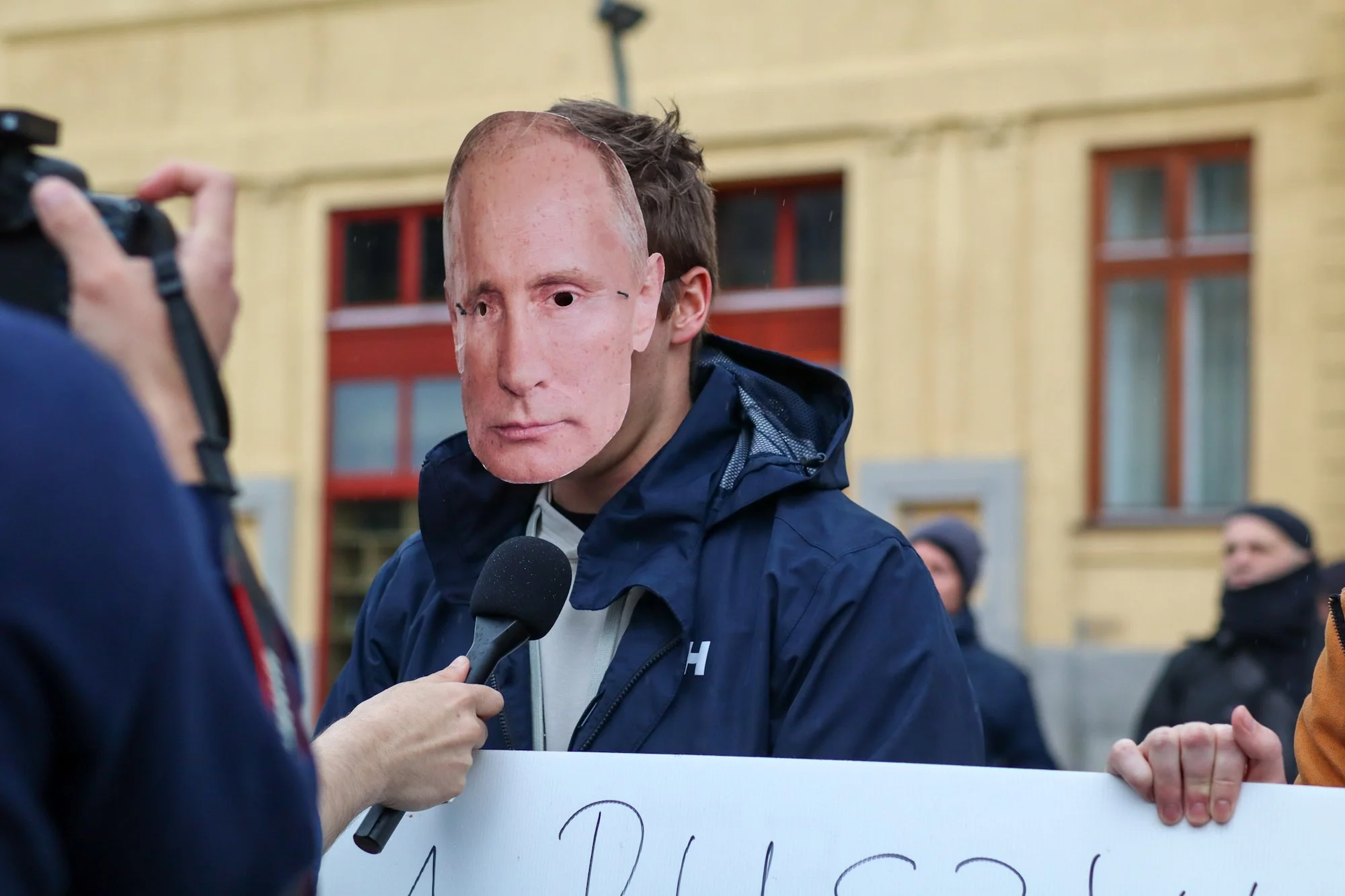
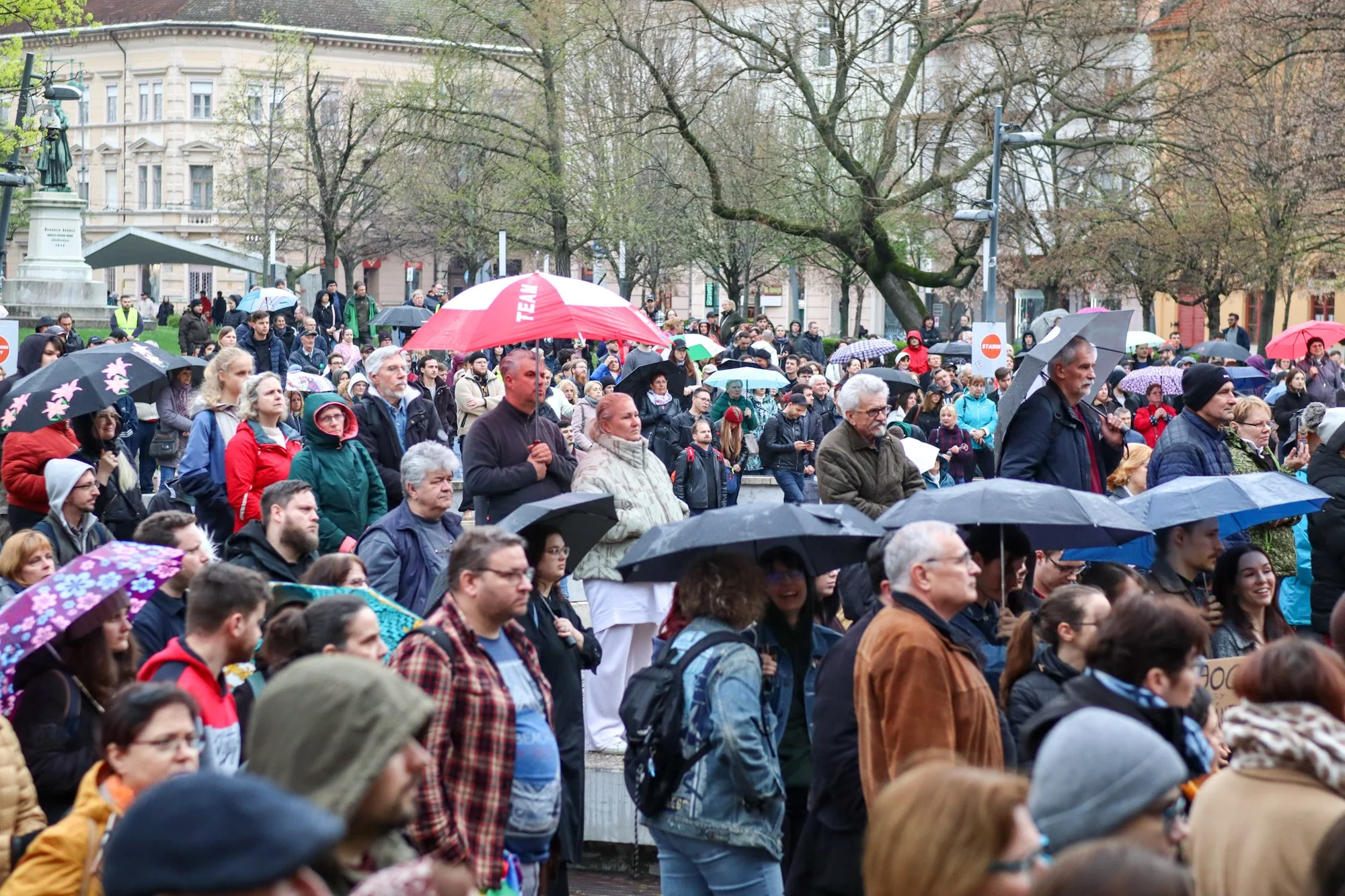
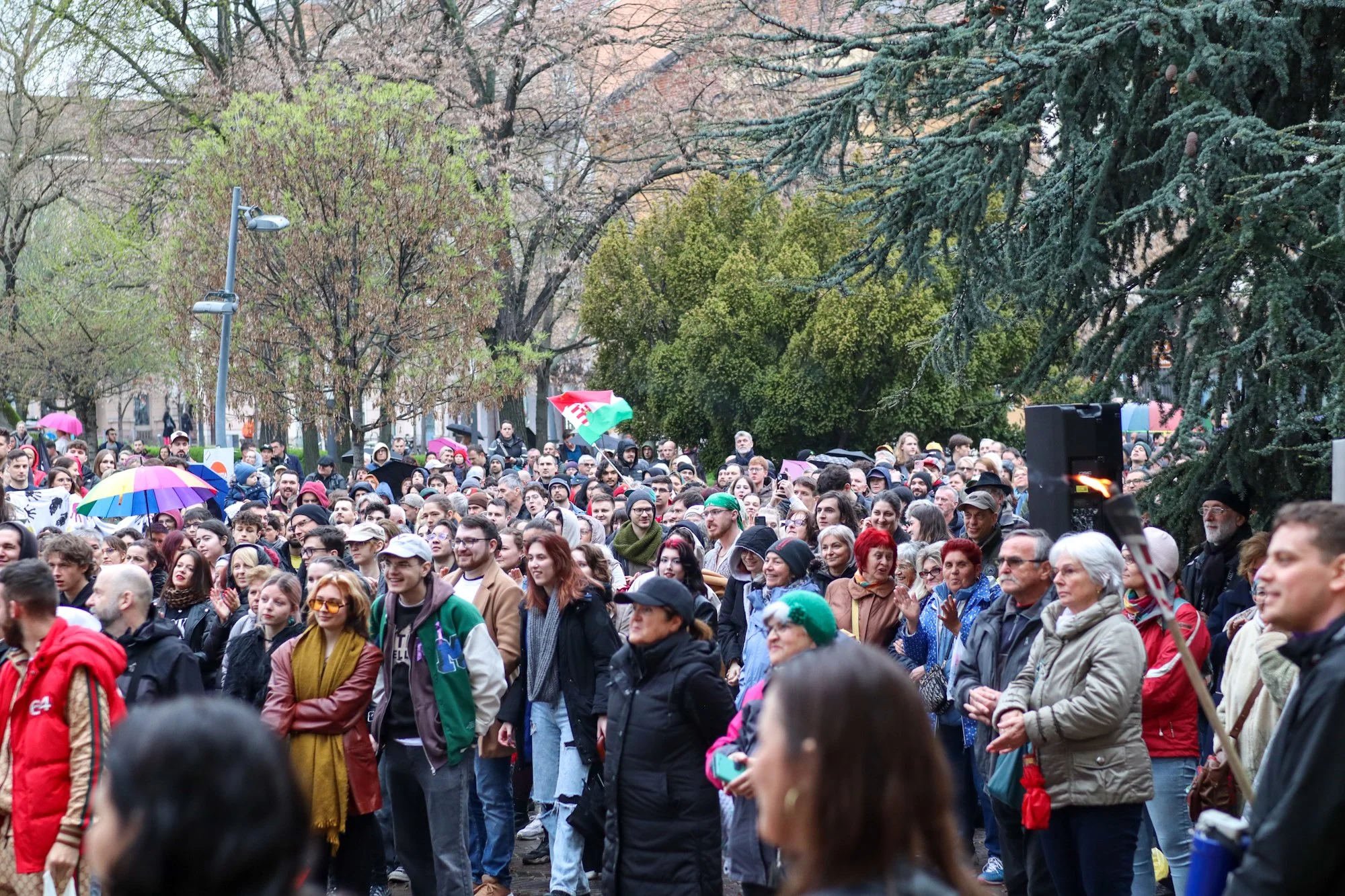
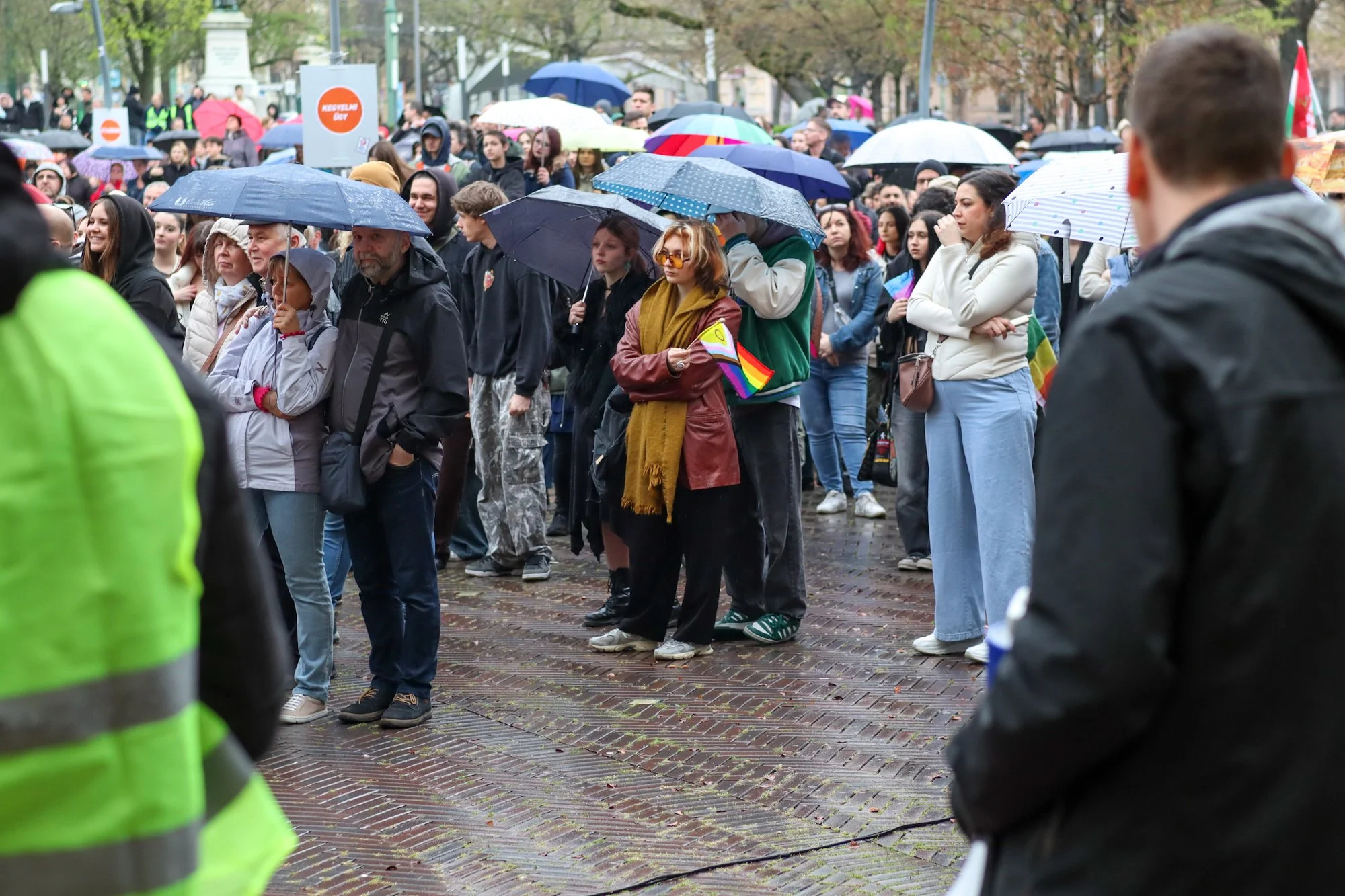
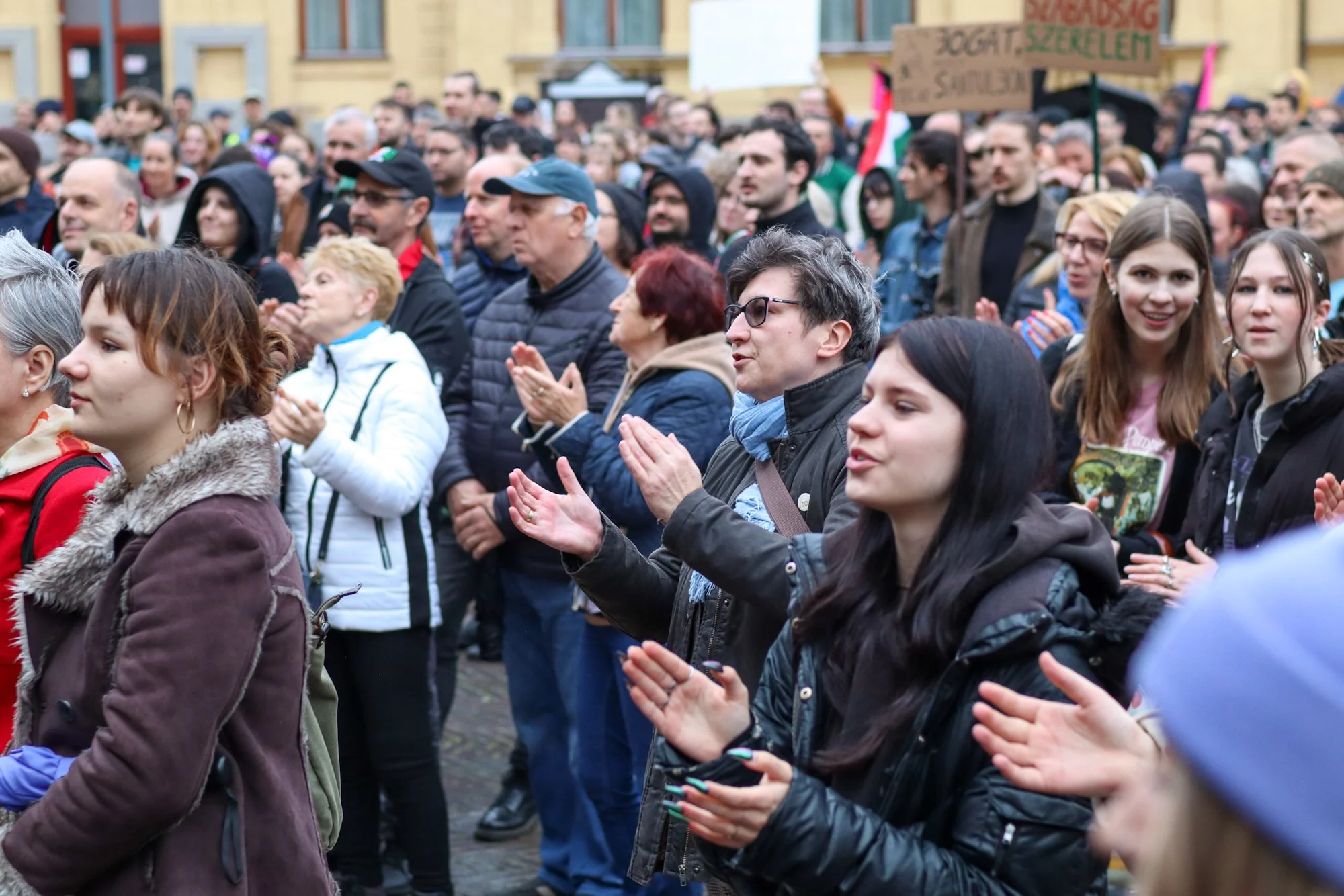
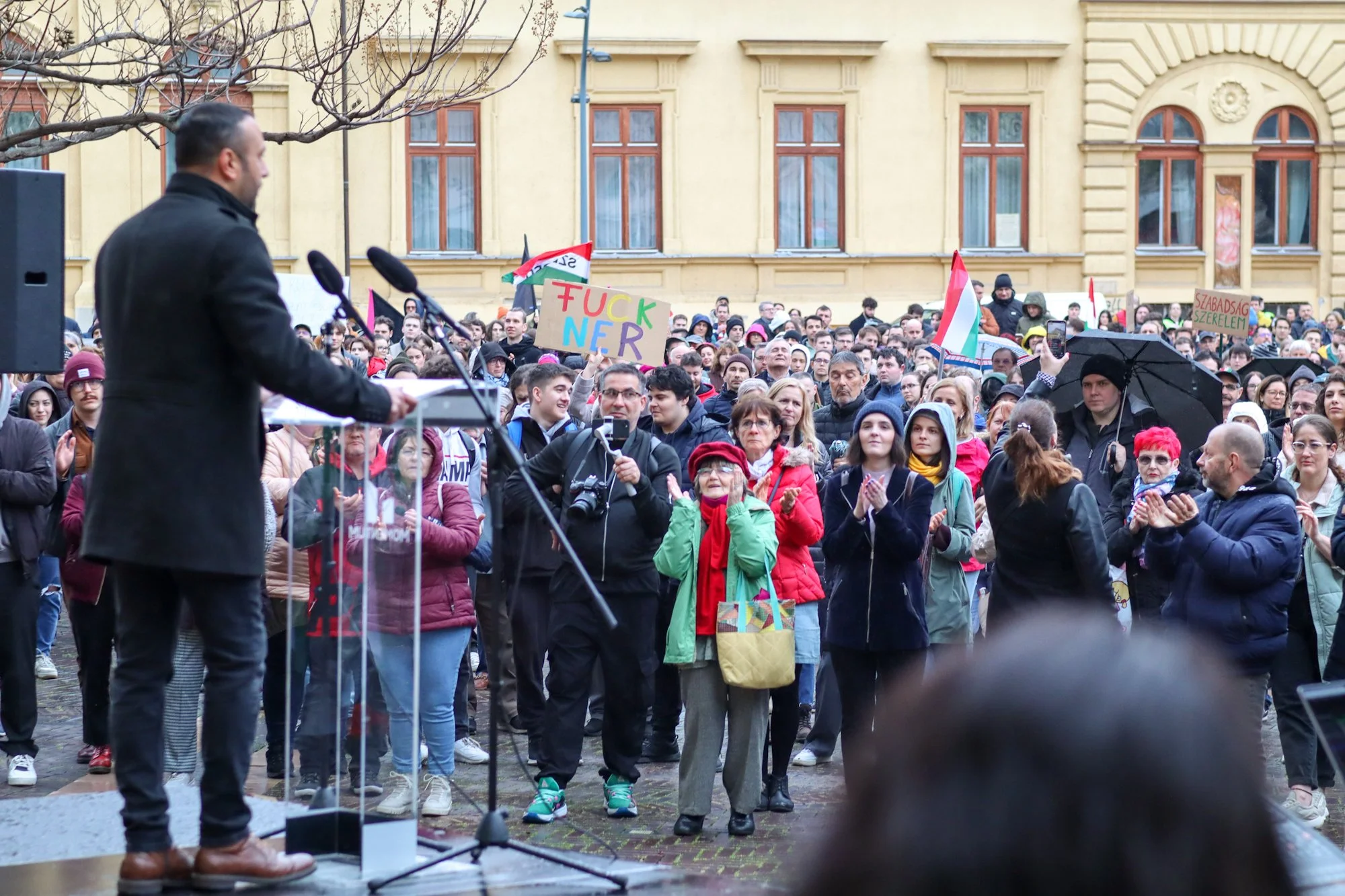
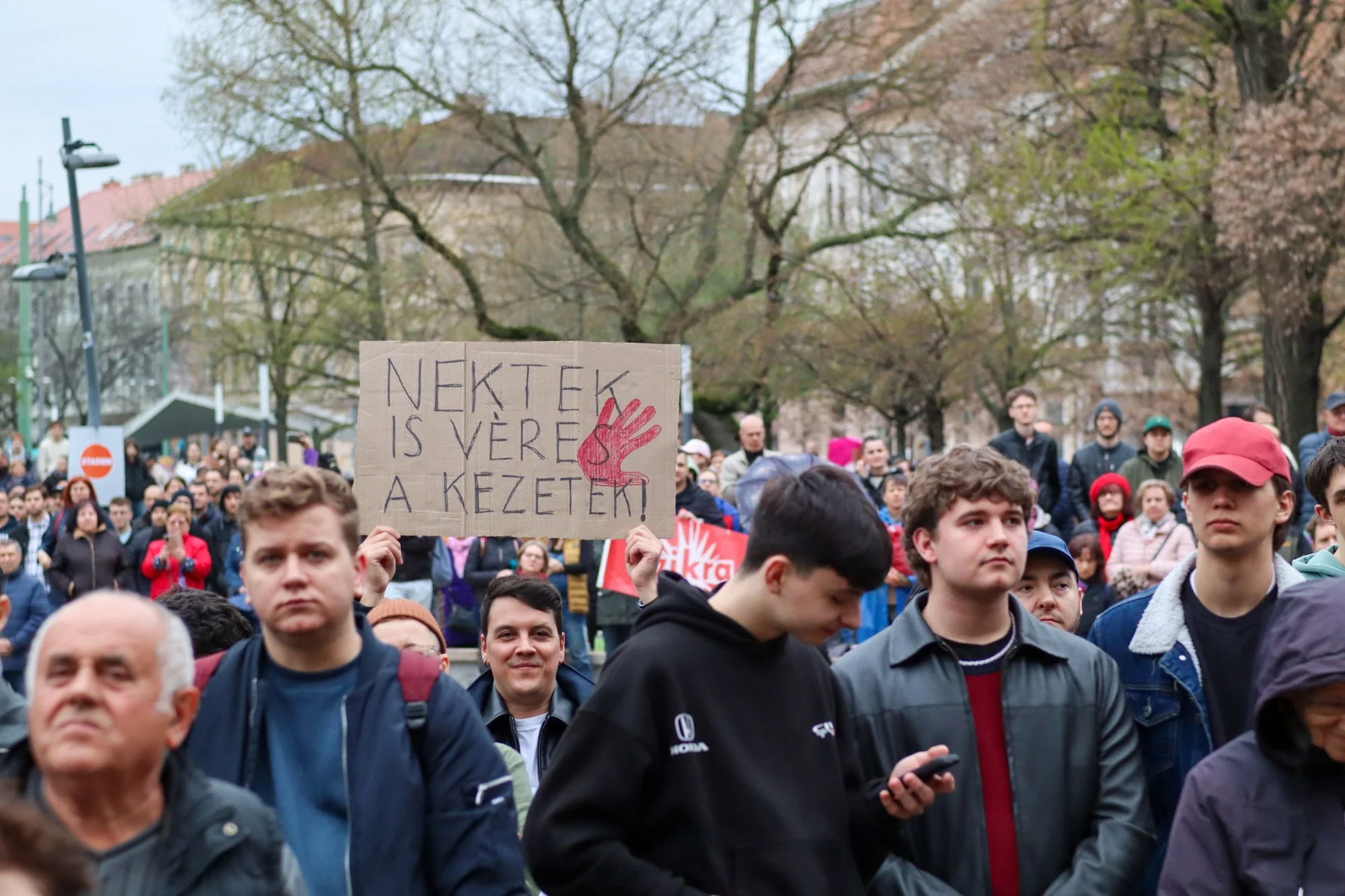
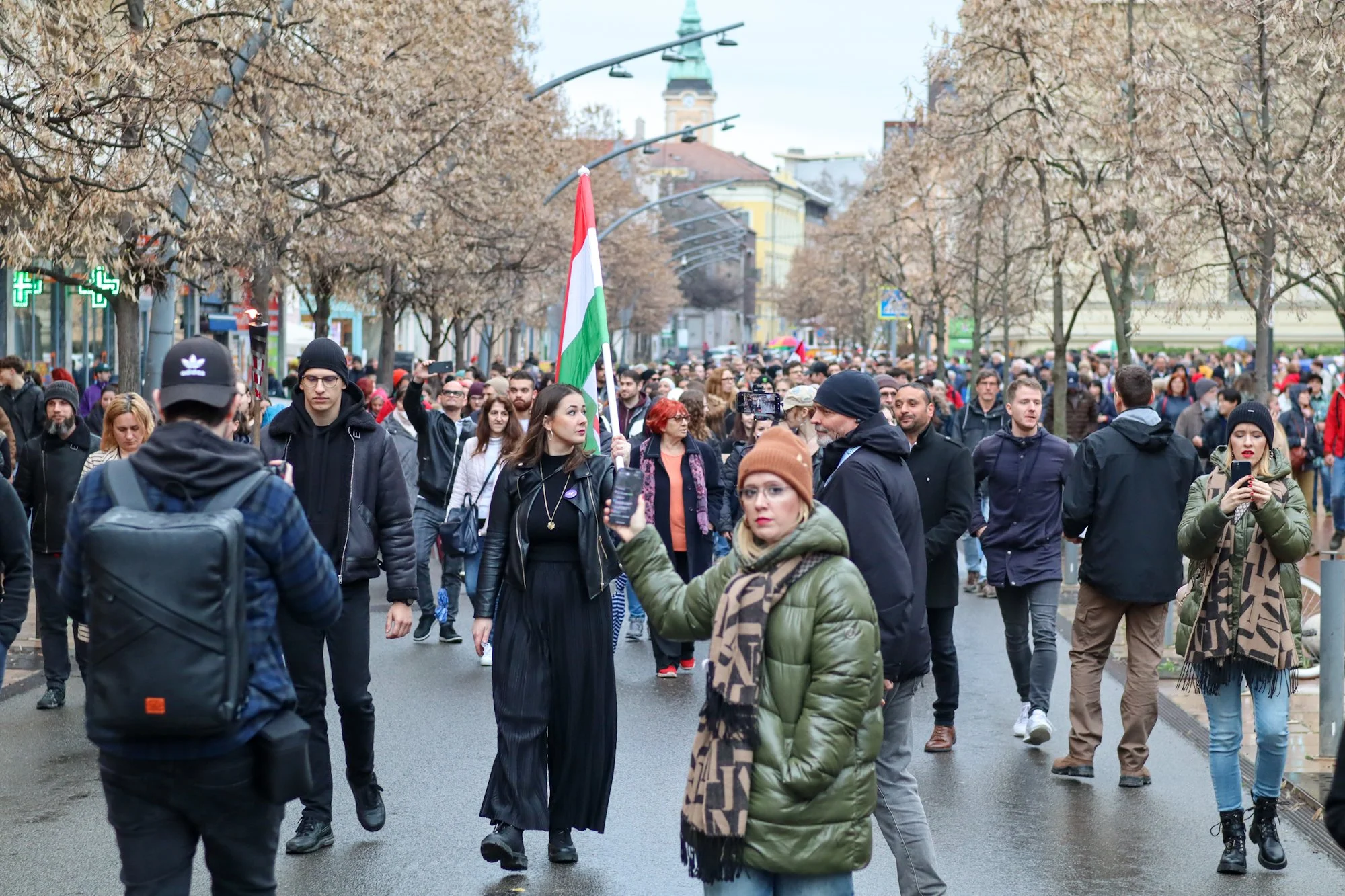

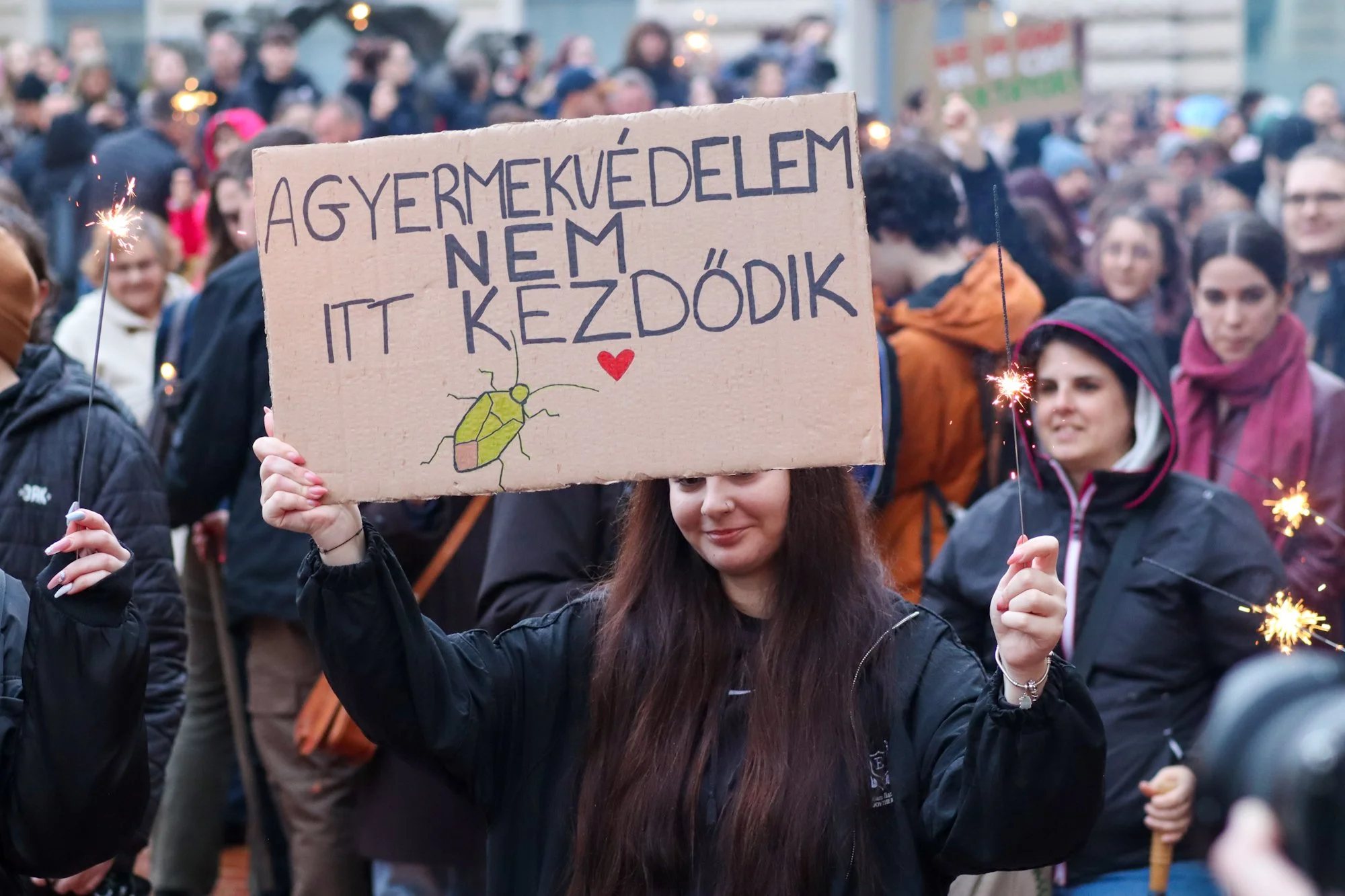
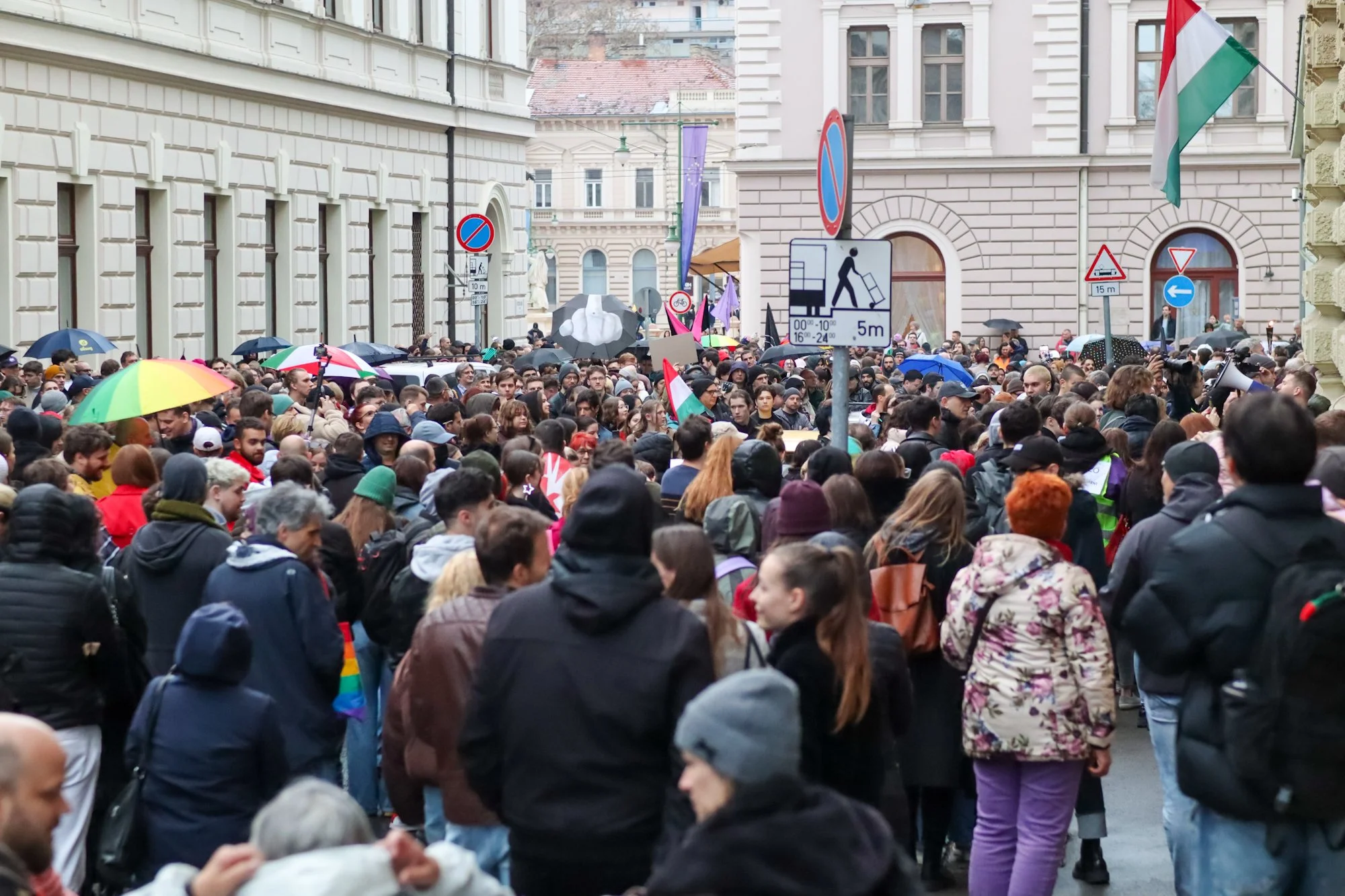

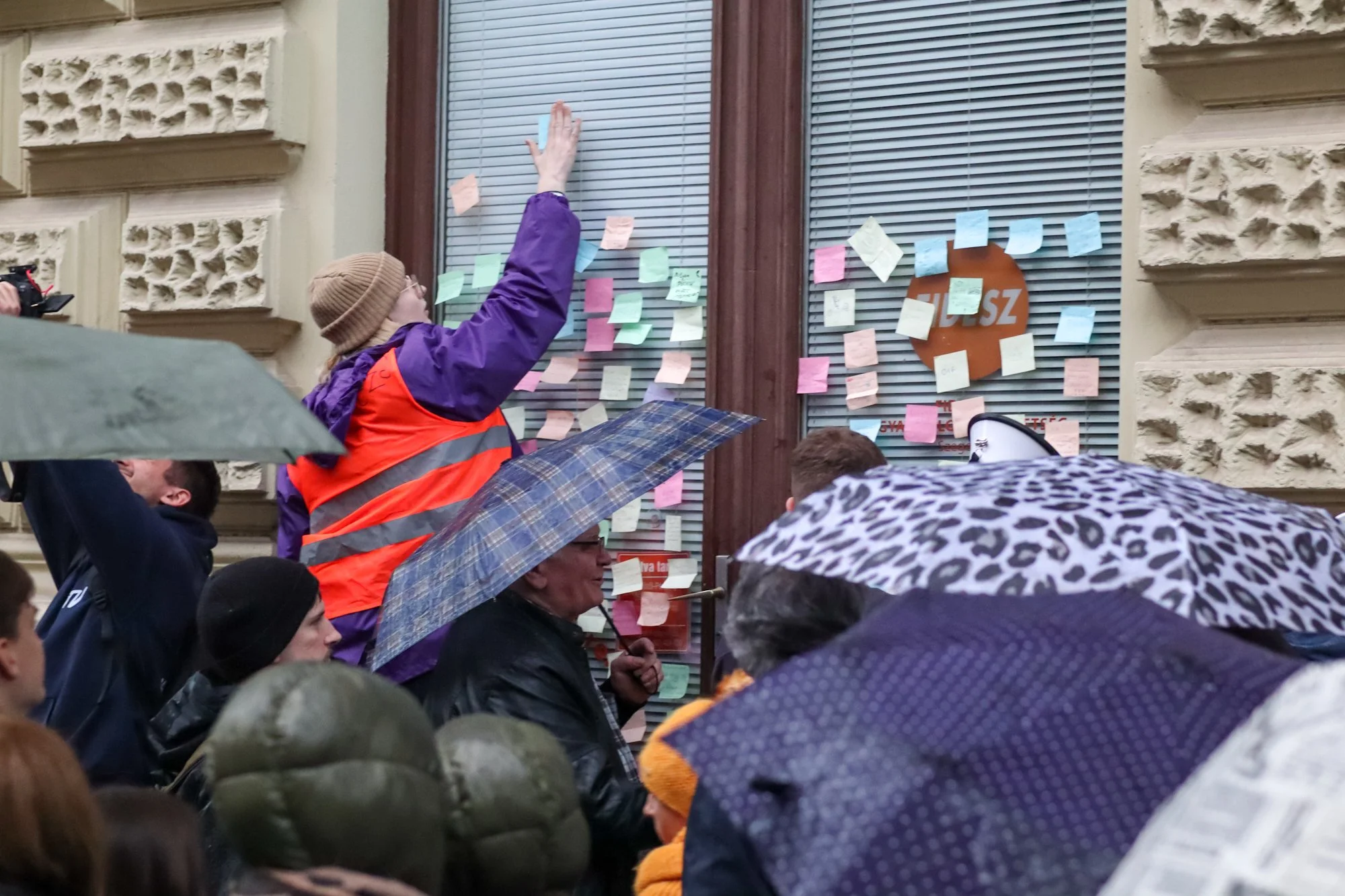
Photos: Szilvia Molnar / Szegedify

